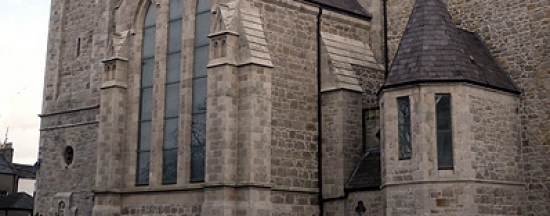The National Maritime Museum celebrates Ireland’s maritime heritage. See lighthouse lights, the SS Great Eastern display, artefacts recovered from the wreck of the RMS Leinster (torpedoed in 1918 with 500 deaths), and models of the City of Dublin Steam Packet Company ships.
The museum’s greatest artefact is probably the building itself – it is one of the few custom built places of worship for sailors remaining intact in the world to-day. There are interesting exhibitions on wildlife around the Irish coastline, a maritime art gallery, a recreated ship’s radio room and a Titanic exhibition.
The Museum houses an extensive collection on all aspects of maritime heritage, from the massive anchor in the museum courtyard to tiny models put together by lighthouse keepers in the many lonely hours spent on duty. The museum is run by volunteers and by members of the community employment scheme.
The Halpin Exhibition: Captain Robert Halpin is an Irish maritime legend. He was born in Wicklow town on 17th February 1836, the youngest of 13 children. At 11 years old he went to sea. His first trips were on sailing ships, but Halpin saw that the future lay in steam.
His career had its ups and downs. In June 1865 he was appointed chief officer of the Great Eastern, the world’s largest ship. The ship was designed to carry 4,000 passengers, plus crew and could travel around the world without refuelling. It was powered by sails, plus paddle wheels and also a screw propeller. It had five engines with a total power of 8,000 hp. It had six masts named after the days of the week from Monday to Saturday, which could carry a huge amount of sail.
Eight years after it was launched, the Great Eastern it was refitted as a cable laying ship. It laid the first successful telegraph cable across the Atlantic from Ireland to the United States, being about the only ship afloat that could hold the necessary amount of cable for such a task. First under Captain James Anderson and later under Captain Robert Halpin it laid over 48,000 km (30,000 miles) of telegraph cable from 1866 to 1878. It ended life as a floating music hall and gym.
Robert Halpin spent many years as a highly respected commander of the Great Eastern. When he retired from the sea he bought Tinakilly House in Wicklow and became involved in politics. He died in January 1894.
Opening Hours:
Open 7 days: 11am – 5pm, last entry 4pm
May be closed temporarily for private ceremonies.
Updates and booking available online.
Closed Good Friday and Dec 25.
Contact & Pricing:
mariner.ie
[email protected]
Tel: 01 280 0969 / 01 214 3964
Mariners’ Church, Haigh Terrace, Dún Laoghaire, Co. Dublin
Adults €8; concessions
